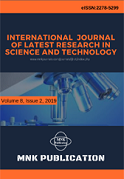DOI:10.29111/ijlrst ISRA Impact Factor:3.35, Peer-reviewed, Open-access Journal
Research Paper Open Access
International Journal of Latest Research in Science and Technology Vol.4 Issue 6, pp 10-15,Year 2015
Correspondence should be addressed to :
Received : 03 November 2015; Accepted : 20 November 2015 ; Published : 31 December 2015

| Download | 127 |
|---|---|
| View | 184 |
| Article No. | 10586 |
The trade-off between certain attributes such as efficiency and cost is always present when it comes to developing applications. Different approaches have been proposed that address the problem of protecting XML documents from unauthorized access especially at the granularity level. Some approaches deploy documents into memory to deliver fast runtime results, and some rather to process access requests statically by labeling each node within XML documents to avoid multiple checks when decisions are made. Web services and e-commerce applications are definitely increasing in day by day bases, access control approaches are highly encouraged to consider these high demands when developing any model. We propose an XML access control model that Eliminates the need of accessing XML documents in databases by analyzing references to XML objects. Giving an access control policy, even with the increase of documents size or access requests, we show that our model closely costs the same. Case studies are left for future work to insure the completeness of our reference contexts.
Copyright © 2015 Qassim AlMahmoud et al. This is an open access article distributed under the Creative Commons Attribution 4.0 International (CC BY 4.0) license which permits unrestricted use, distribution, and reproduction in any medium, provided the original work is properly cited.
Â
Qassim AlMahmoud, Ayman Nayef Ahmad Alhalaybeh , " Analyzing Xpath References In Xml Access Control ", International Journal of Latest Research in Science and Technology . Vol. 4, Issue 6, pp 10-15 , 2015

MNK Publication was founded in 2012 to upholder revolutionary ideas that would advance the research and practice of business and management. Today, we comply with to advance fresh thinking in latest scientific fields where we think we can make a real difference and growth now also including medical and social care, education,management and engineering.

We offers several opportunities for partnership and tie-up with individual, corporate and organizational level. We are working on the open access platform. Editors, authors, readers, librarians and conference organizer can work together. We are giving open opportunities to all. Our team is always willing to work and collaborate to promote open access publication.

Our Journals provide one of the strongest International open access platform for research communities. Our conference proceeding services provide conference organizers a privileged platform for publishing extended conference papers as journal publications. It is deliberated to disseminate scientific research and to establish long term International collaborations and partnerships with academic communities and conference organizers.